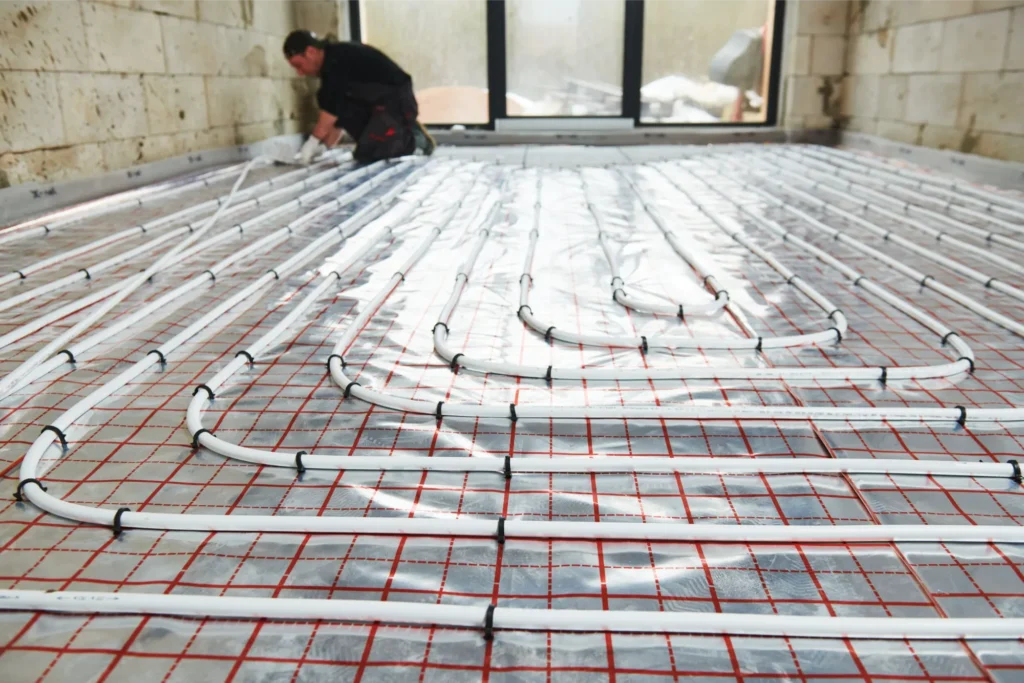
When we first dipped our toes into home remodeling, we didn’t realize how many comfort-boosting features were out there. If you’re aiming to add extra coziness to a space, floor heating might be just the thing you need. Picture waking up on a chilly morning and stepping onto a warm surface—heavenly, right? There’s more than one way to achieve this kind of warmth. You’ll find options powered by electricity, or hydronic arrangements that rely on heated water. Each approach has its quirks, but all can help transform a cold base level into an inviting haven. Ready to learn more? Let’s dig in!
Understanding the Basics
At its core, floor heating involves installing warming elements beneath your chosen surface. Whether you’re dealing with tile grounds, hardwood, or even a floating material, these hidden layers deliver gentle, even warmth that rises upward. Instead of huddling near an old-school furnace or dealing with stuffy ducts, you can enjoy a more uniform feel underfoot.
One key factor is how heat is generated and distributed. Here are the primary methods:
Electric Systems:
- Heating Cables or Mats: Installed under the subfloor for consistent warmth.
- Temperature Control: Equipped with sensors to maintain desired heat levels.
- Ease of Installation: Suitable for various ground types and ideal for retrofitting existing floors.
Exploring Different Floor Heating Systems: Electric Floor vs. Hydronic Floor
When it comes to floor heating, you’ve got two main paths to consider: using an electricity-driven method or going the water-based route. The electricity-driven approach often involves a cable or mat placed beneath your covering. Many homeowners love it because installation can be fairly straightforward. You might pair it with a programmable thermostat, allowing you to reduce costs by only running it when needed. On the other hand, hydronic setups use warmed water flowing through tubes, typically efficient for large areas.
Why Are Radiant Floor Heating Systems So Popular?
Many folks are drawn to electric radiant heating systems because they deliver comfort in a subtle, pleasant way. Rather than noisy air heating systems blowing hot air around, the warmth just quietly rises. With floor heating, the entire room often feels more balanced. There’s no blast of hot, dry air to contend with, and it can help reduce dust circulation. It’s like slipping into a warm, soothing bath—but for your feet!

Specialized Water Based Underfloor Heating Systems
Those leaning towards water based underfloor heating systems might find them ideal for larger renovations. Water-based setups, distribute gentle warmth across wide areas, making them a solid option for big living spaces. Thus, you can enjoy steady, low-profile warmth that doesn’t require expensive pumps or water heaters beyond your main unit. It’s all about layering in comfort without overwhelming your budget.

How To Ensure Easy Installation & Maintenance
The great news is that floor heating can be less intimidating than it sounds. To get started, consider consulting a pro to ensure you pick the right type for your home. Many modern heating products are easy to install beneath the floor’s surface, often working seamlessly with a variety of types, from tile to wood. Check warranties and certifications, too—warming products have been rigorously tested for safety and reliability.
Once in place, maintaining your warming setup is usually simple. Regularly test your floor sensor and thermostat to confirm they’re performing correctly. Keep an eye on any unusual changes in temperature. If something seems off, a quick call to a qualified technician can help you troubleshoot and get everything back in working order.
Wrapping up On Heated Floors
Choosing the right floor heating option is about understanding your home’s unique needs. Both electricity-driven and water-based methods can turn chilly mornings into an experience that feels downright luxurious. By carefully considering installation needs, budget, and energy efficiency, you’ll end up with a setup that makes you smile every time you step onto your warm, cozy surface.
In the end, it’s all about elevating daily life. Switching to heated floors isn’t just a renovation—it’s an upgrade in everyday comfort. So go ahead, embrace the warmth, and start enjoying the toasty, inviting atmosphere that awaits you beneath your feet!
FAQ
1. How easy is it to install an electric floor heating system?
Electric floor heating systems are generally easy to install, especially with heating mats or electric heating cables. Whether you’re using a floor heating kit or integrating with existing electric systems, installation can often be straightforward.
2. What are the benefits of using a floor heating thermostat?
A floor-heating thermostat allows precise control over your in-floor heating system. With a programmable thermostat, you can manage the temperature of your floor, ensuring comfort and energy efficiency.
3. Can electric floor heating be used with different floor types?
Yes, it can be used with various floor coverings, including tile, wood, and floating floors. Products like electric floor heating mats are versatile and can be installed beneath different materials.









